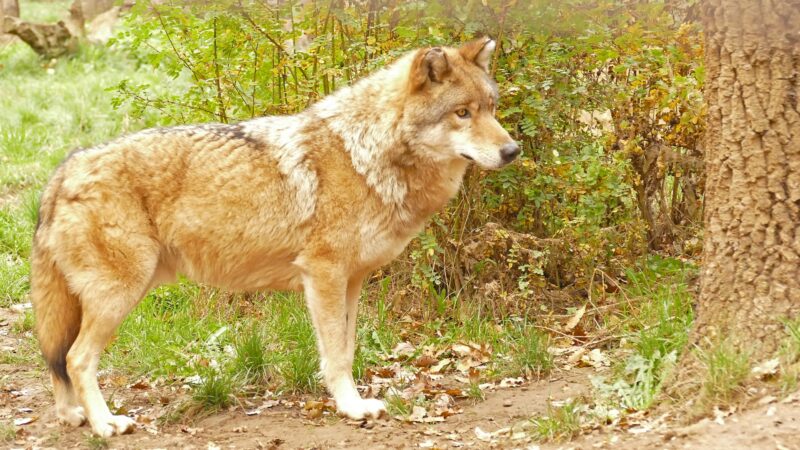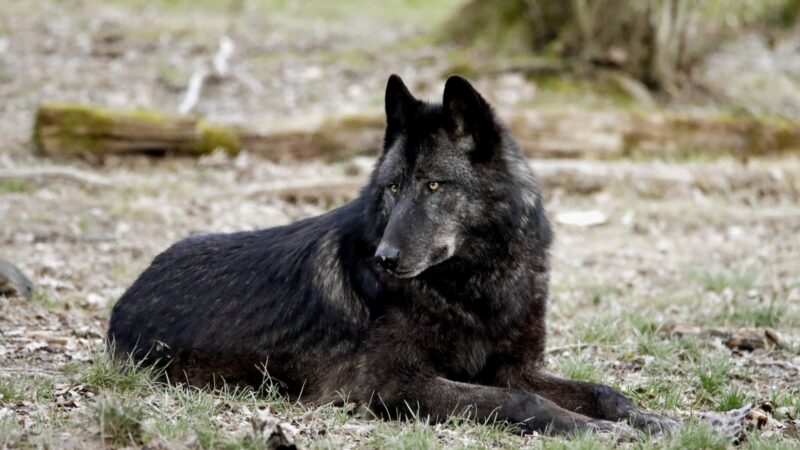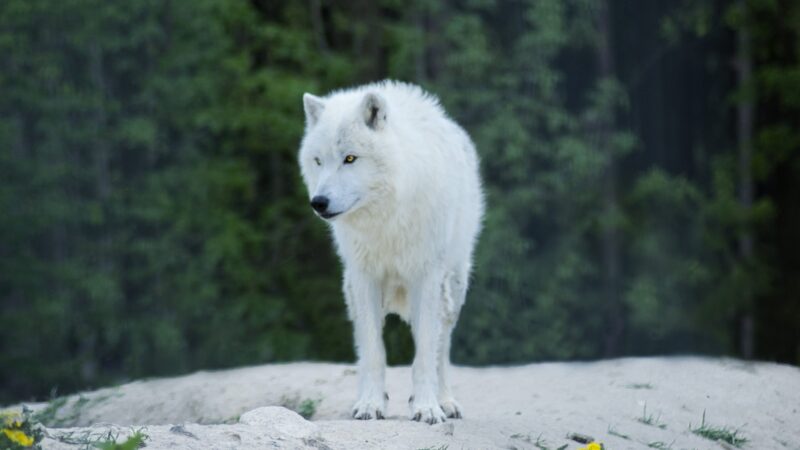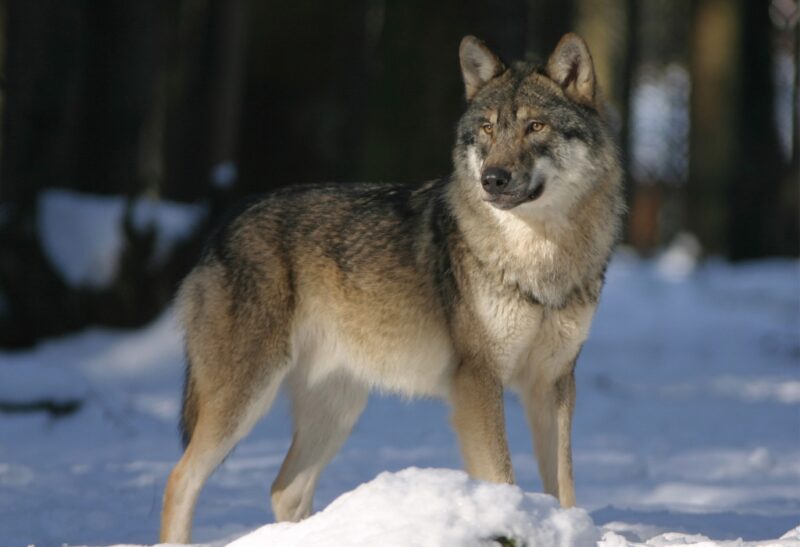Wolves are beautiful animals which have captured the minds of humanity for ages. One of the most distinguishing features of wolves is the color of their fur. Their thick and fluffy fur not only keeps them warm during cold weather, but it also keeps intruders at far.
Wolves can be gray, brown, black, white, or a combo of these colors. They have distinct characteristics and variances that differentiate them.
Even though most people are aware that wolves come in many hues. Few are aware of the nuances of each hue and what sets them apart.
In this post, we’ll take a closer look at the many colors of wolves, as well as their traits, origins, and other interesting information that will make you appreciate these animals even more.
Table of Contents
What Colors Can Wolves Be?
Wolves, as previously stated, can be gray, brown, black, white, or a combination of these colors. Each color has its distinct characteristics and traits that set these animals apart from the others.
What Is the Rarest Wolf Color?
The black wolf is rarest color of a wolf. These wolves usually have black fur combined with yellow eyes. They are extremely rare in the wild but they are not distinct subspecies, but rather a genetic variation of the gray wolf.
Can Wolves Be Different Colors?
The color of a wolf’s coat is determined by genetics and can significantly differ between individuals. This means that a single pack of wolves will have wolves with different colors.
Grey
Grey wolves, better known as timber wolves or Western wolves, are the largest species of wolf. They are most frequently found in North America, Europe, and Asia.
Their diet consists primarily of animals most commonly found there which are deer and elk. Grey wolves can typically live in the wild for 6 to 8 years.
They are distinguished by their thick fur coat, long snout, and sharp teeth. They are intelligent, adaptable, as it is expected for their role as the top predator.
Brown

Brown wolves, also known as eastern wolves, are a grey wolf subspecies. They are found in North America’s wild, primarily in the Great Lakes region. Main sources of food are white-tailed deer and small mammals.
Brown wolves typically live in the wild for 6 to 8 years. They have thick fur coat that is a mixture of brown and grey fur. They have a smaller body size and a narrower skull than grey wolves.
Black

Black wolves are an uncommon color variation of the grey wolf. They can be found in North America, Europe, and Asia. Their diet is primarily deer and elk and typically live for 6 to 8 years.
Black wolves usually have yellow eyes. However, they are not different wolf subspecies, but rather belong to the species of the gray wolf.
White

White wolves are another rare color of the species of grey wolf. They can be found in North America, Europe, and Asia.
White wolves usually have blue eyes. They are also a variation of the gray wolf. These wolves are frequently albinos, which means they have a genetic condition that prevents pigmentation from being produced in their fur and eyes.
Mixture of Gray, Brown, Black, and White

Wolves with a combination of gray, brown, black, and white fur are not distinct species or subspecies of wolves. They are simply individual wolves with distinctive colors.
Their diet and habits is same to that of other gray wolves. This distinct coat color is caused by genetic variation and can be found in both wild and captive wolves.
Fun Facts About Wolves
- Wolves are pack animals that live in packs.
- Wolves use howling to communicate with their pack.
- Wolves are apex predators and they play an important role in keeping their ecosystem in balance.
- Wolves can detect scents from great distances.
- Wolves are known to form strong bonds with their mates and they mate for life.
What Is the Strongest Wolf?
The grey wolf (also known as timber wolf or western wolf) is the largest and most powerful wolf. Grey wolves are the largest species of wolf, weighing up to 175 pounds (80 kg) and reaching a length of six feet (1.8 m). They are feared in the wild due to their endurance, strength and intelligence.
Grey wolves are the top predators in their food chain, hunting large animals like deer and elk. They have powerful jaws and sharp teeth that allow them to easily overpower their prey. They are also dangerous because of their pack-hunting strategy where they hunt larger animals together.
What Is the Most Common Wolf?
The gray wolf (Canis lupus) is the most widespread wolf species, found in a variety of places throughout the Northern hemisphere which includes forests, tundra, and grasslands.
They are known as timber wolves or western wolves and can be found in North America, Europe, and Asia and are believed to be the ancestor of the domestic dog.
What Are Baby Wolves Called?
Pups are baby wolves; this term is commonly used for all young animals in the Canidae family, which includes wolves, foxes, and domestic dogs.
Puppies are born with soft, fluffy fur and weigh approximately 1 pound (0.5 kg). They are also referred to as cubs or whelps.
Related: What Are Baby Wolves Called? | Are They Pups or Cubs?
What Are Wolves Afraid Of?
Wolves are not easily frightened, but they may be scared of strange animals or loud noises. They are wild animals, and as such, they have developed a keen sense of awareness and caution in the face of potential threats in their surroundings.
Additionally, they are naturally wary of unfamiliar animals and may be alarmed by loud noises like fireworks or gunshots. They may also be afraid of strangers, particularly if they have had negative experiences with humans in the past.
It is important to note, however, that wolves are not easily scared and will not typically flee potential threats.
Are Wolves Friendly?
Wolves are wild animals that are usually hostile to humans. They have evolved to be extremely territorial and protective of their pack. Humans are often viewed as a threat.
Some captive wolves can be trained to tolerate human presence and occasionally they will even form bonds with their handlers. Wild wolves are not used to human presence and may react aggressively if close to humans.
List of Sources
Learn About Wolves. Northland College.
Gray wolf. Smithsonian’s National Zoo & Conservation Biology Institute.
The role of wolves in ecosystems. Washington Department of Fish and Wildlife.
